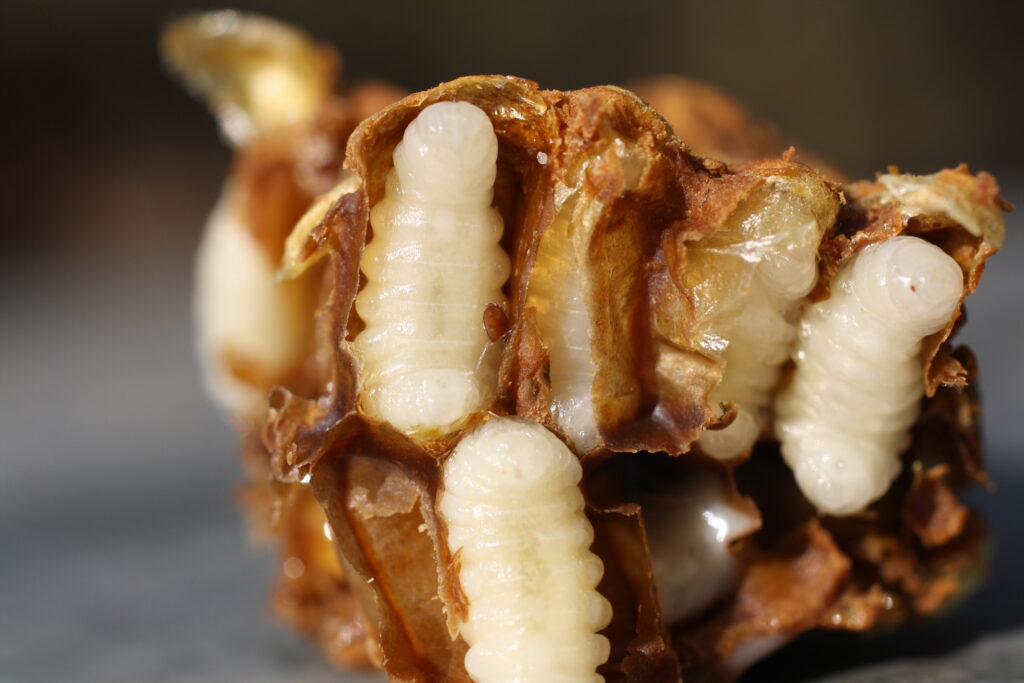What insights does the BEEHAVE model offer into colony dynamics and bee health management? The BEEHAVE model provides valuable insights into colony dynamics, especially concerning Varroa mite infestations, which are crucial for effective bee health management.
How accurate and objective are the findings from BEEHAVE simulations? The findings from BEEHAVE simulations are accurate and objective, showcasing significant reductions in mite pressure through drone brood removal strategies.
Are there any discrepancies between the model predictions and real-world observations? Yes, there are discrepancies between the model predictions and real-world observations, highlighting the need for adjustments to enhance the model’s realism.
What adjustments are proposed to improve the model’s accuracy? Proposed adjustments include refining mite preference relationships and accounting for mite re-entry by forager bees, aiming to align the model more closely with empirical data.
Why is it essential to combine drone brood removal with other treatments? Combining drone brood removal with other treatments, such as organic acid treatments, is crucial for effectively controlling mite populations over the long term and ensuring colony survival.

How effective are good beekeeping practices in reducing mite pressure and promoting healthy colony growth? Good beekeeping practices, including drone brood removal and organic acid treatments, have proven highly effective in reducing mite pressure and fostering healthy colony growth.
What further research and data collection are needed in bee health management? Further research and data collection are essential to refine the BEEHAVE model and capture the complex interactions between treatment parameters, environmental factors, and colony conditions.
How valuable is the BEEHAVE model in supporting beekeeper education and bee health efforts? The BEEHAVE model serves as a valuable tool for understanding colony dynamics, testing varroa control strategies, and contributing to beekeeper education and bee health efforts.
What is the importance of continued refinement and validation of the BEEHAVE model? Continued refinement and validation of the BEEHAVE model will enhance its utility in guiding practical beekeeping practices and mitigating the impact of Varroa mites on bee colonies.
Conclusion: In conclusion, the BEEHAVE model offers valuable insights into bee health management, providing a framework for understanding colony dynamics and testing varroa control strategies. Through ongoing refinement and validation, the model will continue to support beekeepers in making informed decisions to promote healthy bee populations and combat the threats posed by Varroa mite infestations.
Download publication
Schödl, Isabel; Odemer, Richard; Becher, Matthias; Berg, Stefan; Otten, Christoph; Grimm, Volker; Groeneveld, Jürgen
In: Ecology & Evolution, vol. 12, iss. 11, pp. 1-14, 2022.
@article{nokey,
title = {Simulation of Varroa mite control in honey bee colonies without synthetic acaricides: Demonstration of Good Beekeeping Practice for Germany in the BEEHAVE model},
author = {Isabel Schödl and Richard Odemer and Matthias Becher and Stefan Berg and Christoph Otten and Volker Grimm and Jürgen Groeneveld},
url = {http://vibee-project.net/wp-content/uploads/2022/11/Schoedl_et_al_2022.pdf},
doi = {10.1002/ece3.9456},
year = {2022},
date = {2022-11-08},
urldate = {2022-11-08},
journal = {Ecology & Evolution},
volume = {12},
issue = {11},
pages = {1-14},
abstract = {The BEEHAVE model simulates the population dynamics and foraging activity of a single honey bee colony (Apis mellifera) in great detail. Although it still makes numerous simplifying assumptions, it appears to capture a wide range of empirical observations. It could, therefore, in principle, also be used as a tool in beekeeper education, as it allows the implementation and comparison of different management options. Here, we focus on treatments aimed at controlling the mite Varroa destructor. However, since BEEHAVE was developed in the UK, mite treatment includes the use of a synthetic acaricide, which is not part of Good Beekeeping Practice in Germany. A practice that consists of drone brood removal from April to June, treatment with formic acid in August/September, and treatment with oxalic acid in November/December. We implemented these measures, focusing on the timing, frequency, and spacing between drone brood removals. The effect of drone brood removal and acid treatment, individually or in combination, on a mite-infested colony was examined. We quantify the efficacy of Varroa mite control as the reduction of mites in treated bee colonies
compared to untreated bee colonies. We found that drone brood removal was very effective, reducing mites by 90% at the end of the first simulation year after the introduction of mites. This value was significantly higher than the 50–67% reduction expected by bee experts and confirmed by empirical studies. However, literature reports varying percent reductions in mite numbers from 10 to 85% after drone brood removal. The discrepancy between model results, empirical data, and expert estimates indicate that these three sources should be reviewed and refined, as all are based on simplifying assumptions. These results and the adaptation of BEEHAVE to the Good Beekeeping Practice are a decisive step forward for the future use of BEEHAVE in beekeeper education in Germany and anywhere where organic acids and drone brood removal are utilized.},
keywords = {},
pubstate = {published},
tppubtype = {article}
}
compared to untreated bee colonies. We found that drone brood removal was very effective, reducing mites by 90% at the end of the first simulation year after the introduction of mites. This value was significantly higher than the 50–67% reduction expected by bee experts and confirmed by empirical studies. However, literature reports varying percent reductions in mite numbers from 10 to 85% after drone brood removal. The discrepancy between model results, empirical data, and expert estimates indicate that these three sources should be reviewed and refined, as all are based on simplifying assumptions. These results and the adaptation of BEEHAVE to the Good Beekeeping Practice are a decisive step forward for the future use of BEEHAVE in beekeeper education in Germany and anywhere where organic acids and drone brood removal are utilized.
